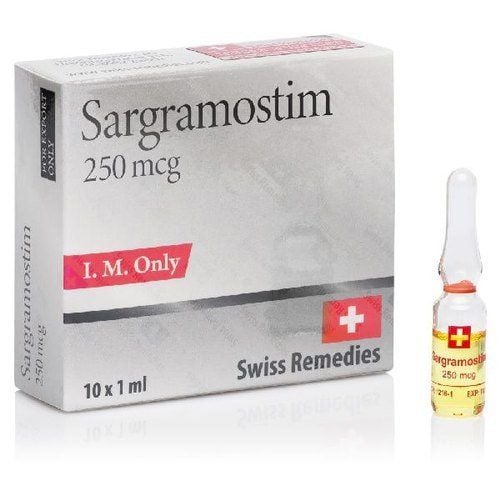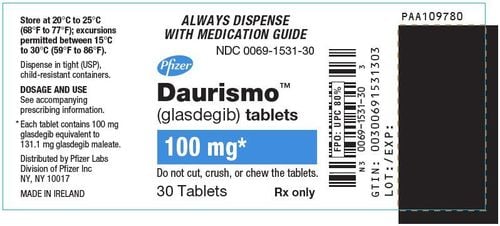This is an automatically translated article.
Sargramostim is a group of drugs used in the treatment of infections caused by leukopenia or other related leukopenia. Sargramostim needs to be prescribed by a doctor and must be used correctly. The drug sargramostim can cause side effects when used, so patients need to be careful.
1. What is Sargramostim?
Sargramostim is understood to be a man-made version of GM-CSF, a protein that stimulates white blood cell production (WBC). More specifically, it is also produced to produce neutrophils, macrophages and dendritic cells. These types of white blood cells fight infection and are often reduced during cancer treatment.
Neutrophils are the first type of white blood cell to respond to an infection. When the number of these cells falls below 1000/mm3, it is considered leukopenia. This puts the patient at a higher risk of infection. Macrophages fight infection by eating bacteria, but stay active longer than neutrophils. Dendritic cells make up only 1% of the white blood cell count, but keep checking the area. They notify neutrophils and macrophages when an infection is detected.
Sargramostin is indicated in the treatment of patients with acute myeloid leukemia (AML), neutropenia due to chemotherapy. In addition, Sargramostim is also used in the treatment of patients undergoing blood stem cell transplantation, in patients undergoing peripheral blood stem cell transplantation, and bone marrow transplantation (BMT). Sargramostim is also used to treat patients who have received a bone marrow transplant but have not responded. Sargramostim works by making more neutrophils and certain other blood cells in the body.
Sargramostim is not a specific cancer treatment, but an adjunct to care. This means it is used to relieve bone marrow suppression (decreased blood counts) secondary to cancer and cell-killing treatments.
2. Instructions on how to use Sargramostim
Sargramostim is a liquid solution, so it can be injected under the skin or directly into a vein. Sargramostim is given once a day, preferably at the same time of day, until the patient is no longer neutropenic. The dose of the drug will be prescribed by the treating doctor based on the body weight. Sargramostim is started at least 24 hours after chemotherapy or radiation therapy has been completed. During treatment, patients will have regular tests to monitor blood cell counts while taking the drug. sargramostim .
Storage and handling
Sargramostim should be stored in the refrigerator and in its original container. Do not shake or freeze the medicine. To soothe the injection site, remove the medication from the refrigerator 30 minutes before the injection. Do not reuse single dose vials, syringes, or needles.
3. Some reactions may occur when using Sargramostim
Common side effects of sargramostim use include:
Bone pain Sargramostim stimulates the bone marrow to produce more white blood cells, which can lead to pain in the bones. This pain is most common in the femur, hip, and biceps. Physicians usually do not prescribe acetaminophen for pain, because it can make people unaware that they have a fever. So talk to your doctor about pain relievers you can take.
Fever and Sargramostim infection can cause a low-grade fever, but it can also be a sign of an infection. Any fever (temperature > 38°C) should be reported to your doctor immediately. Signs of infection should also be reported to the doctor if the person feels chills, sore throat, stuffy nose and burning when urinating.
Injection site reactions Some people after sargramostim injection have redness, swelling, or itching at the injection site. This reaction is usually temporary and will go away. The injection site may sting or burn if injected in cold weather. Sargramostim is usually stored in the refrigerator, so take it out of the refrigerator 30 minutes before it comes to room temperature before taking it. Rotate injection sites, inject slowly (over 30-60 seconds) or numb the skin with ice for one minute before and after injection.
Allergic reactions Allergic reactions are uncommon, but can still be serious. Signs of a reaction include: skin rash, hives, difficulty breathing, rapid pulse, sweating, and fainting. If a sick person develops any of these symptoms, tell your doctor or nearby medical center right away.
Less common, but also important side effects, may include:
Swelling and fluid retention: Patients taking this medicine should report any conditions to their doctor such as: difficulty breathing, cough, swelling in your hands, feet, or face that is severe. Breathing problems and changes in heart rate: Tell your doctor or healthcare provider if you have any new or worsening episodes of shortness of breath, or feel your heart pounding, fast, or irregularly. . The above are not all side effects that may occur when using sargramostim. If the patient notices any other reaction, it is necessary to report it to the doctor so that a solution can be given.
4. Does Sargramostim affect fertility?
There is currently no official information on whether exposure to this drug sargramostim can cause birth defects. If you are pregnant or planning to become pregnant or are breast-feeding, you should consult your doctor before deciding to take sargramostim.
Sargramostim is a medicine that should only be taken when prescribed by a doctor. During treatment, sargramostim may cause unwanted side effects. Therefore, it is necessary to follow and follow the instructions of the doctor to minimize the above situation.
Follow Vinmec International General Hospital website to get more health, nutrition and beauty information to protect the health of yourself and your loved ones in your family.
Please dial HOTLINE for more information or register for an appointment HERE. Download MyVinmec app to make appointments faster and to manage your bookings easily.
Reference source: oncolink.org













